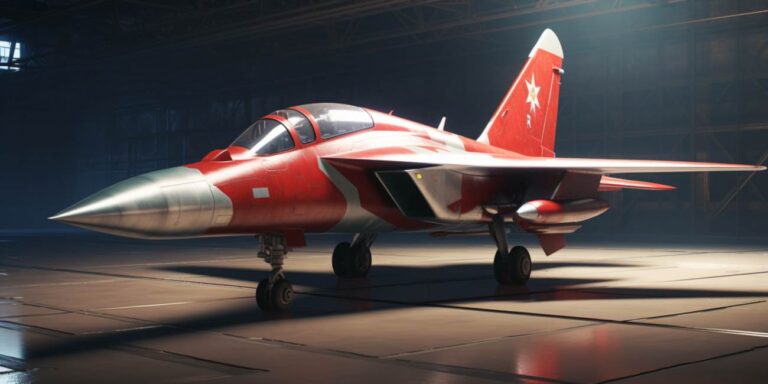One of the glaring issues was the aircraft’s limited agility, attributed to its swing-wing design. While the swing-wing concept aimed to provide versatility, it introduced complexities that hindered the MiG-23’s maneuverability compared to contemporaries.
The MiG-23 was plagued by a short operational range, restricting its ability to cover vast distances or engage in prolonged missions. This limitation stemmed from its modest fuel capacity and inefficient engine, compromising its strategic value in various scenarios.
Another pivotal factor contributing to the poor performance of the MiG-23 was its questionable avionics. Outdated and unreliable systems affected navigation, targeting, and overall mission success. Pilots often grappled with subpar radar capabilities, hindering the aircraft’s effectiveness in modern aerial combat.
The lack of technological advancements became increasingly evident as air defense systems evolved. The MiG-23’s dated design struggled to adapt to emerging threats, making it vulnerable in contested airspace. The absence of crucial upgrades further solidified its status as a subpar fighter.
The unfavorable reputation of the MiG-23 was exacerbated by its maintenance challenges. High maintenance requirements and a propensity for technical issues rendered it a logistical nightmare for air forces relying on this platform. This directly impacted operational readiness and overall effectiveness.
Despite efforts to address some of these issues through variants like the MiG-23MLD, the fundamental flaws ingrained in its design could not be fully rectified. The aircraft’s legacy, unfortunately, remains tarnished by the question of why it was such a poor aircraft in comparison to its contemporaries.
The mig-23’s unreliable engines leading to many crashes
The MiG-23, a Soviet-designed fighter aircraft, gained notoriety for its unreliable engines, contributing to a significant number of crashes during its operational history. The R-29 turbojet engines installed in the MiG-23 were plagued by a range of issues, leading to numerous accidents and fatalities.
One of the primary concerns was the engine’s inconsistent performance. Pilots reported instances of sudden power fluctuations and unexpected stalls during flight, posing a grave risk to both the aircraft and its crew. These erratic behaviors often occurred without warning, making it challenging for pilots to respond swiftly and effectively.
The lack of reliability in the MiG-23’s engines became a critical issue, especially during high-stakes missions and combat scenarios. The R-29 engines were prone to flameouts, where the combustion process in the engine would cease, resulting in an abrupt loss of thrust. This was a particularly dangerous situation, especially during crucial phases of flight such as takeoff or aerial engagements.
Another major concern was the short lifespan of the R-29 engines. The components within the engines experienced rapid wear and tear, leading to frequent breakdowns. This not only increased maintenance costs but also compromised the overall operational readiness of the MiG-23 fleet. Pilots faced the constant challenge of managing an aircraft with unpredictable engine behavior, affecting their confidence in the platform.
The lack of sufficient reliability in the MiG-23’s engines prompted several air forces to reassess their reliance on this aircraft. Despite its impressive speed and agility, the high rate of accidents attributed to engine issues raised serious doubts about the aircraft’s overall safety and suitability for sustained military operations.
Attempts were made to address the engine problems through various upgrades and modifications, but the fundamental issues persisted. The limitations of the R-29 engines cast a shadow over the otherwise advanced capabilities of the MiG-23, tarnishing its reputation in the aviation community.
The mig-23’s lack of maneuverability compared to western jets
The MiG-23, a Soviet-designed fighter jet, has often been criticized for its lack of maneuverability when compared to its Western counterparts. In the realm of aerial combat, the ability to swiftly change direction and outmaneuver opponents is a critical factor, often determining the victor in a dogfight.
One of the primary reasons behind the MiG-23’s limited maneuverability lies in its design philosophy. The aircraft prioritized speed and the ability to cover vast distances quickly over the finesse required in close-quarters engagements. While its top speed was impressive, its agility suffered, putting it at a disadvantage when engaged in tight turns and complex aerial maneuvers.
Western jets, such as the F-15 and F-16, were engineered with a different emphasis. Their design aimed for a harmonious balance between speed and maneuverability, granting them a distinct advantage in dogfights. These jets boasted advanced aerodynamics and control systems that allowed for rapid and precise movements in the heat of aerial combat.
The significance of maneuverability in a dogfight cannot be overstated. It enables a pilot to dictate the flow of the engagement, making unpredictable moves to gain the upper hand. In contrast, the MiG-23 often found itself struggling to keep up with the dynamic nature of aerial combat, where split-second decisions and agile maneuvers can be decisive factors.
During the Cold War, the debate over the superiority of Western or Soviet aircraft often boiled down to the nuances of maneuverability. While the MiG-23 excelled in certain aspects, its shortcomings in close-quarters engagements were a glaring weakness. The aircraft’s bulkier frame and less responsive controls made it less adept at the intricate dance of a dogfight.
The mig-23’s short service life and early retirement
The MiG-23, despite its initial promise, had a remarkably short service life in several air forces around the world. Launched in the early 1970s, this Soviet-designed aircraft faced numerous challenges that led to its retirement sooner than anticipated.
One of the primary issues plaguing the MiG-23’s service life was its demanding maintenance requirements. The aircraft’s complex systems and avionics often necessitated extensive care, leading to increased downtime and operational costs. Pilots and ground crews found it challenging to maintain the MiG-23 at the required readiness levels, impacting its overall effectiveness.
The retirement of the MiG-23 was hastened by the emergence of more advanced and versatile fighter jets. Technological advancements in aviation, especially in radar systems and weapon capabilities, rendered the MiG-23 obsolete in comparison to newer platforms. Nations operating the MiG-23 began seeking modern alternatives to enhance their air defense capabilities.
Despite attempts to upgrade the aging aircraft, the challenges were insurmountable, leading to its premature retirement. The MiG-23 struggled to adapt to the evolving nature of aerial warfare, and its limitations became increasingly apparent.
The search for a suitable replacement became a priority for air forces phasing out the MiG-23. Nations turned to contemporary fighter jets with improved avionics, stealth capabilities, and enhanced performance. The decision to retire the MiG-23 was not merely based on its age but also on the strategic need for a more competitive and reliable aircraft.
In the wake of the MiG-23’s retirement, diverse fleets of modern fighters took its place, bolstering air forces with cutting-edge technology. The replacement aircraft not only addressed the shortcomings of the MiG-23 but also provided a more formidable deterrent against potential threats.






